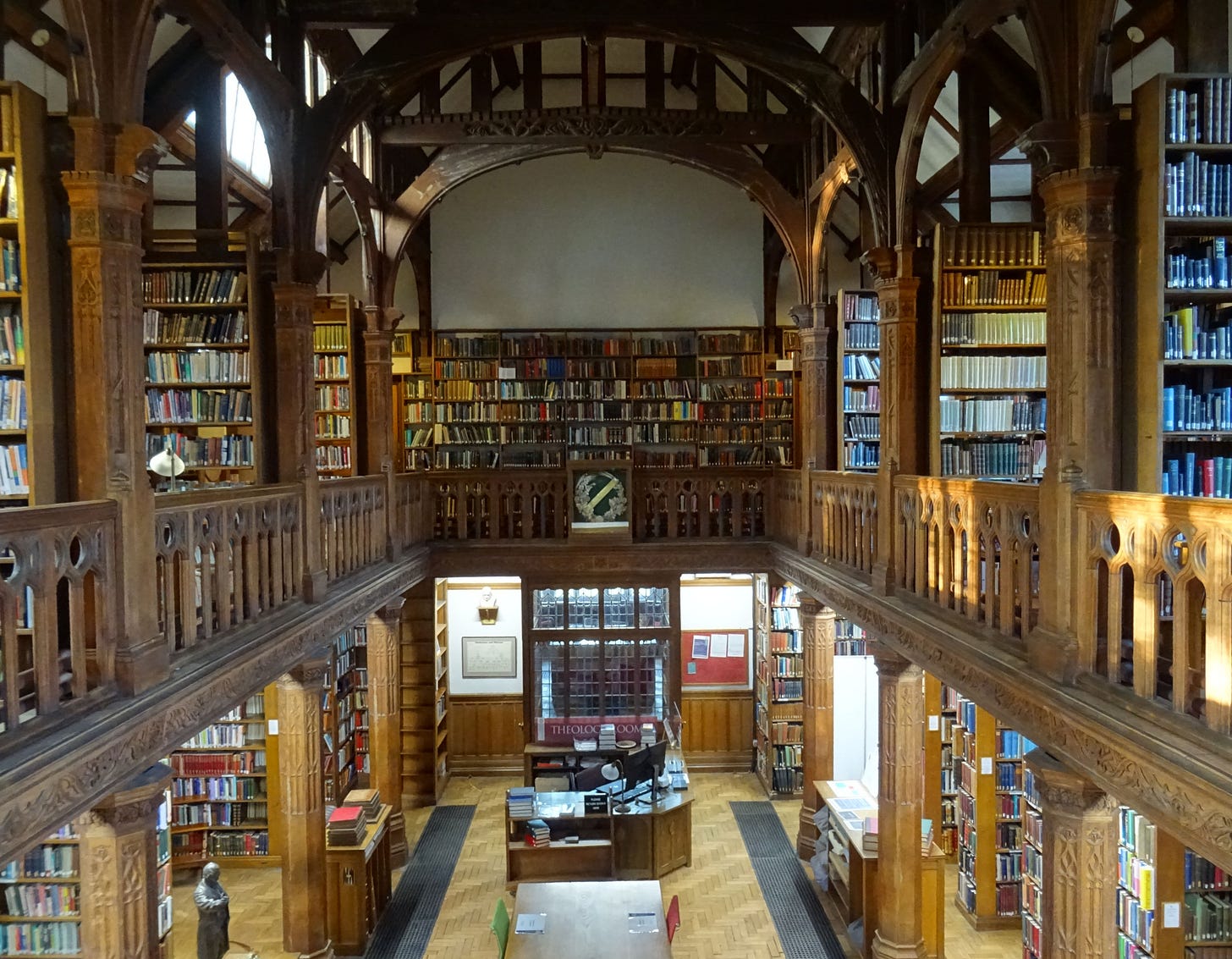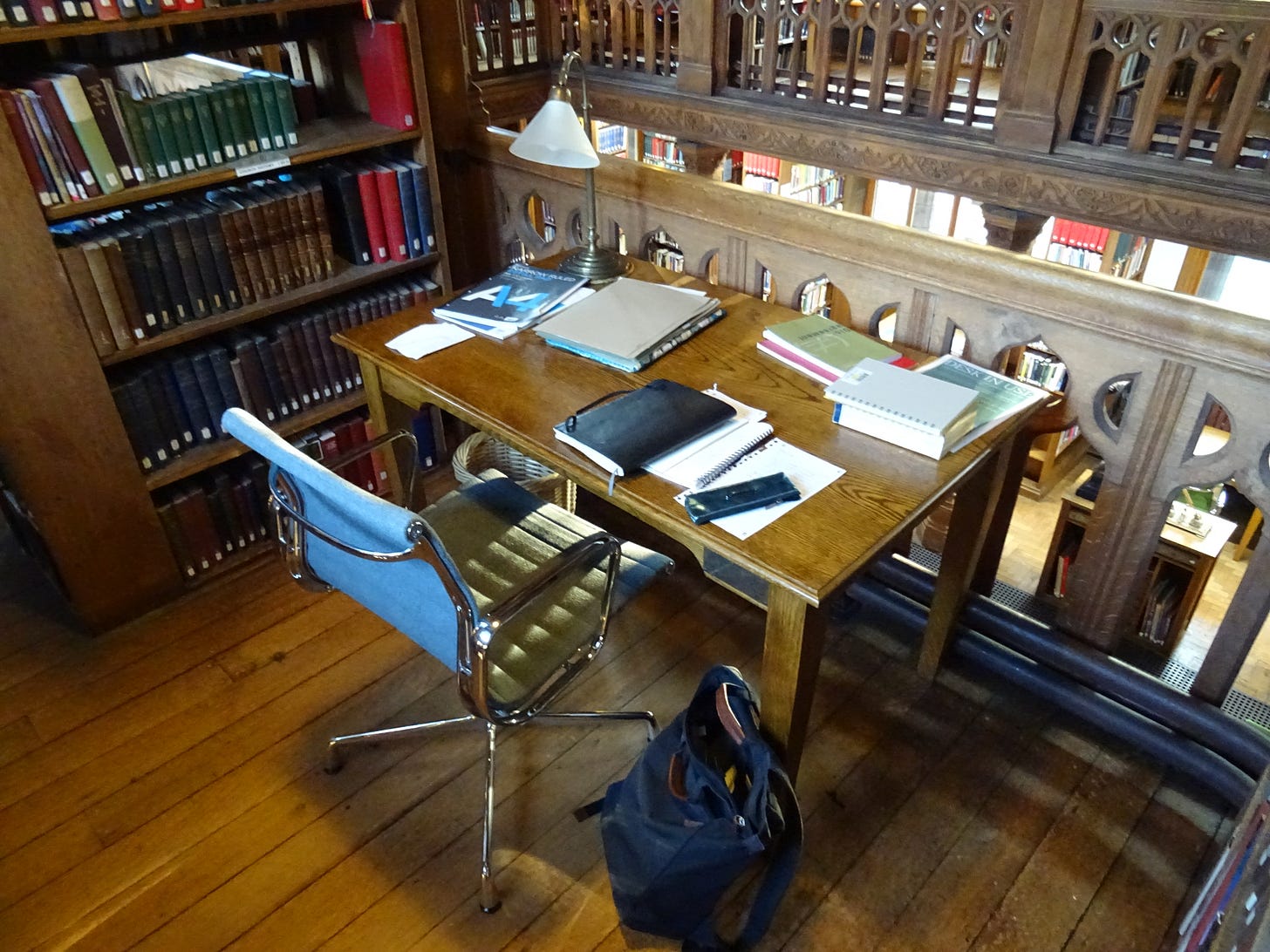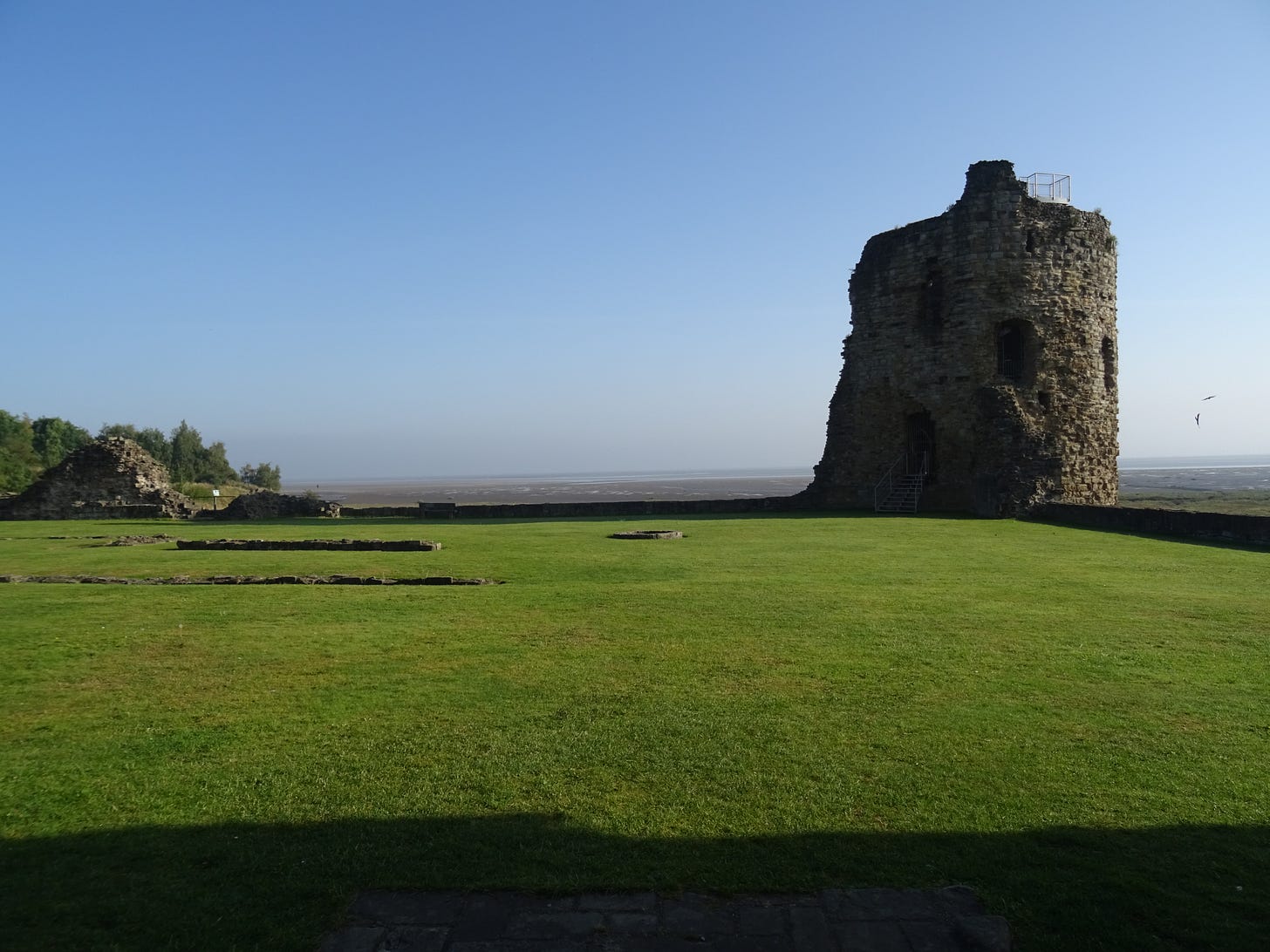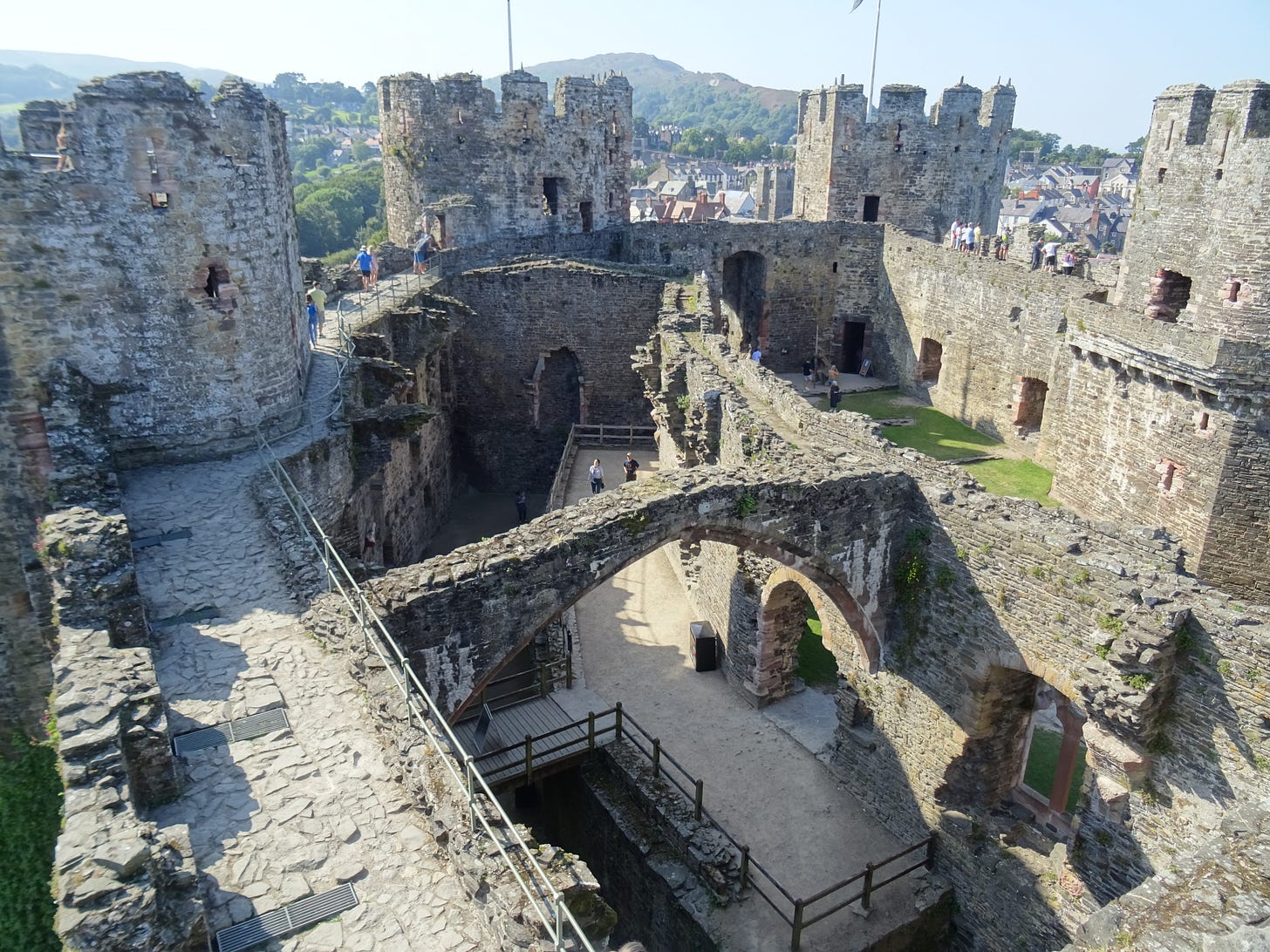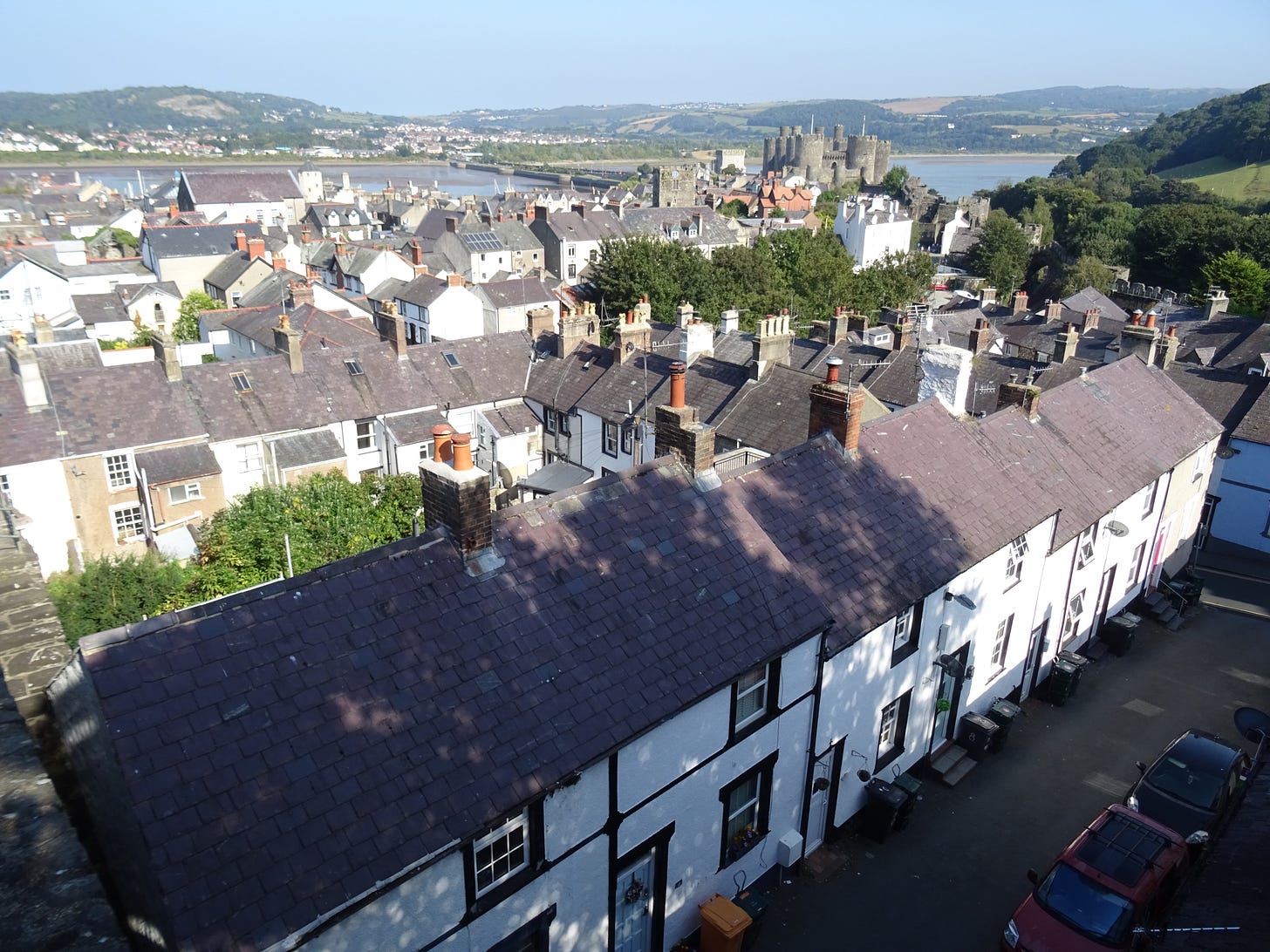Flint, Fish and Chips...
...and Falling on my Arse
I first published this post back in March, just for my paid subscribers. I’m now trying to catch up and release a lot of these posts so that everyone can read them.
It is 9am on an almost perfect Tuesday morning in September and I have had two accidents already. Nothing major but not the best way to start my day.
Being a writer is a marvellous calling and it really is a calling. Samuel Johnson said that: “No man but a blockhead ever wrote except for money” but I bet he knew the truth. I would wager that this was a cover for a man who didn’t know how not to write. A man who could only make sense of his world by writing it down.
This was the man who spent eight years creating an authoritative dictionary of the English language. Okay, he received fifteen hundred guineas for writing it – that’s about a quarter of a million quid in today’s money – but he had to pay assistants and live for eight years. He also wrote over two hundred essays during the same period. He had to write, the money was a bonus. Another bonus in today’s world is the right to stay the night at Gladstone’s Library in Hawarden.
Gladstone’s Library bills itself as the finest residential library in the UK. I didn’t know that there were others but, even if there are, that title is unassailable because this is one of the most perfect places on the planet.
It was opened in October 1902, more than eight years after Prime Minister William Gladstone’s death, and houses the twenty thousand or so volumes he collected during his lifetime. The library itself is a two storey galleried room with a wood-beamed vaulted ceiling. The gallery is held aloft by carved wooden columns and each set of bookshelves on the upper floor end in another carved wooden column holding up the curving beams in the ceiling.
Desks with brass lamps, a wicker wastepaper basket and an embroidered coaster sit between each set of shelves. Last night I sat at one. To my left were books on church history and to my right were ones on, well, on church history again. Gladstone did tend to like books ecclesiastical.
Behind me tall, leaded windows gave a view across the café au lait sandstone frontage of this glorious building. Through the simply carved balustrade ahead of me I could see down to the ground floor, more books and desks and a couple of easy chairs. In the gaps between the passing cars there is total silence save for the scratching of my pencil over the paper of my notebook. Occasionally the only other occupant of the library will turn a page. She’s ten yards away but the noise of the turning page is so loud because there is nothing to compete with it at all.
Even though there are only two of us here, most of the desks are full of papers and books and laptop computers. Writers have left them there after their day’s research and, I presume, will return tomorrow. Now my fellow writer leaves and I am all alone in this library and free to use it until ten tonight. I go down to the lower floor and sit in one of the easy chairs to read for a while in the total silence of Gladstone’s library.
Unfortunately the silence does not continue after I leave. In tribute to the fact that the place was built for books, the walls between the bedrooms appear to have been constructed of paper. Across the hall there is a woman on a very loud, three-way Zoom call which goes on until very late. I finally drift off and am awoken very early by the man next door who sounds as though he is clearing his throat and emptying his bladder right next to my single bed. That is why I am ready to leave so early and, therefore, decide that I have time to look at the nearby airport before I head off.
On my way into the airport, looking into the low morning sun and the mist off the River Dee, I am reading the sign which tells me to stop when I hear a crunch. There is a barrier across the road. I know that now as it’s sat across the middle of my windscreen. The lady in the gatehouse merely raises the barrier the few more inches required to let me in and waves me through. That’s my first minor mishap of the morning.
There has been an aircraft factory here since the Second World War and thousands of Wellington bombers were built here. There were also a couple of hundred Avro Lancasters built here towards the end of the war, including PA474, the only Lancaster still airworthy in the UK and one of only two anywhere in the world. The only other airworthy Lancaster is in Canada and was built there in 1945. The factory at Hawarden now produces wings for Airbus aircraft which then head to France to join the rest of the aeroplane.
RAF Hawarden was also a training base for fighter and reconnaissance pilots with Supermarine Spitfires, Hawker Hurricanes, Miles Master two-seat trainers and Fairey Battles operating as part of No. 7, No. 57 and No. 41 Operational Training Units. Today, the Tornado Heritage Centre – which has displays relating to the Tornado aircraft not the kind of weather system that might whizz Dorothy to Oz – is housed here but was closed when I arrived. It had that in common with the Chocks Away Café, which was my real aim. Defeated, I leave the airport.
My next stop is the castle at Flint, eight miles further down the Dee where the estuary really starts to open up to the sea. Flint Castle was the first of a series of castles built during King Edward I's campaign to conquer Wales in the late thirteenth century. In 1647, during the English Civil War, it was captured by the Parliamentarians following a three-month siege. To prevent its re-use it was destroyed on Cromwell's orders. Today, the ruins of the castle are glorious, sat on grassy banks overlooking the estuary, the Wirral peninsula back in England invisible today in the mist on the other side of the river.
The dew soaked sides of the now empty moat are, it seems, a little too slippery to climb. It’s time for my second mishap of the day. I slide and fall. I get up and fall again with all the grace of Bambi on ice. The knees of my trousers and sleeves of my shirt are now grass stained. It ends up being the warmest day in Wales in twenty-seven years - I’m not making that up, it really was - and I have to wear my jacket to cover the green marks on my shirt. The marks on my knees and forearms will also elicit some robust questioning from my wife when I return home.
Two men sit at a picnic table in the grounds of the castle. Between them are cans of super strength lager. It’s going to be a long day. I drive along the coast through tiny towns I’ll never know. I see a shining 40th birthday banner and some deflated balloons on a worn-out semi overlooking Liverpool Bay. A glimpse into other lives. Through Prestatyn and Rhyl, past their caravan parks and amusement arcades, and on into Llandudno.
My last summer holiday before my dad died was in Llandudno. I was six and he was fifty-three. I’ve not been back since. I have only small snatches of memory left over from that holiday. The promenade and pier, climbing the Great Orme and a café I can’t find. My memory is of my mum and me sitting in the café, it’s after dark, my dad’s not there. Perhaps there had been some kind of argument, I don’t know. We look out over a little square and I think there’s a church. I can’t find it today, though. I don’t even really know where to start looking. I don’t honestly know if it ever existed at all.
What I do find is much as it was in my memory, though. The pier; the promenade; the holidaymakers; the long, curving cove lined with pale painted hotels. It’s a thoroughly pleasant place. The streets leading away from the sea are lined with guesthouses. The town centre is full of shops taking up the bottom floor of impressive three and four storey Victorian terraces. The Great Orme, on the headland just to the north-west of the town, rises to a little over six hundred feet and, from what little I remember, gives stunning views out across the North Sea. I’ve no time to visit the top today, though.
My satnav, which struggles to pronounce the simplest of street names, somehow seems fluent in Welsh. It doesn’t bat a binary eyelid at roads or villages which look like the worst possible selection of Scrabble letters to me.
All of the place names on the signs are in Welsh first and English second which is as it should be but does make it difficult if you don’t remember and are past the sign before you’ve read the English translation. Probably my favourite Welsh word that I see on signs is Allan. It means “exit”. They should do more of that. For instance, “parking” is parcio; wouldn’t it be much better if they just chose a person’s name? Moira would be good. Likewise “karting” is kartio, call it Dave. Welsh is an ancient Celtic language and so there was obviously no need to phrases like “business park” which is parc busnes or “snooker” which is snwcer. Call them Polly and Francois. I guess that is the reason why I like the small village just a mile off the A5 southwest of Wrexham called Trevor. While I’m talking about the A5, if you can drive along that road from Bangor to the English border without gasping at least seventeen times from the grandeur of nature, then you are clinically dead. You are some kind of walking dead zombie creature.
Anyway, today I’m not heading inland to Trevor, I am heading to Conwy which is another memory from that holiday in 1975. I seem to recall that we visited the castle and a tiny house; they’re my only memories. Tonight I’ll be spending the night in the town. This will give me the chance to visit my second castle of the day and, hopefully, not fall on my arse at this one. Conwy is a thoroughly delightful little town sitting on the River Conwy opposite Llandudno Junction. The two are linked by a road bridge and a rail bridge and a narrow suspension bridge for those arriving on foot. The footbridge leads directly to the castle, the road and rail bridges skirting the northern and southern flanks respectively.
Again, it’s Edward I’s planned conquest of Wales in the late thirteenth century that we have to thank for the amazing Conwy Castle. The walls that encircle the town were built at the same time and you can still walk round them on a warm September afternoon.
I did and it was a magnificent way to spend some time. Looking out over the sloping streets and grey tiled rooves back down to the castle and the waterfront. In the opposite direction, the hills of Tal y Fan, Pen y Castell, Llwytmor and Carnedd Llewelyn disappear into the distance, each range seeming fainter than the one before.
Eventually the walls bring you back in a circuit to the water’s edge. The thing to do now, and trust me on this, is to follow the signs for the Fishermans Chip Shop and take your fish and chips to sit on the river wall and watch the boats bob around in the harbour. They are, undoubtedly, the very best fish and chips you’ll ever taste.
I can almost taste them again now, writing about this visit some time later. That’s the marvellous thing about writing, I can experience this day again. Even better, you can experience it too even if you’ve never been there. That is the reason to write. Only a blockhead ever wrote for money.



